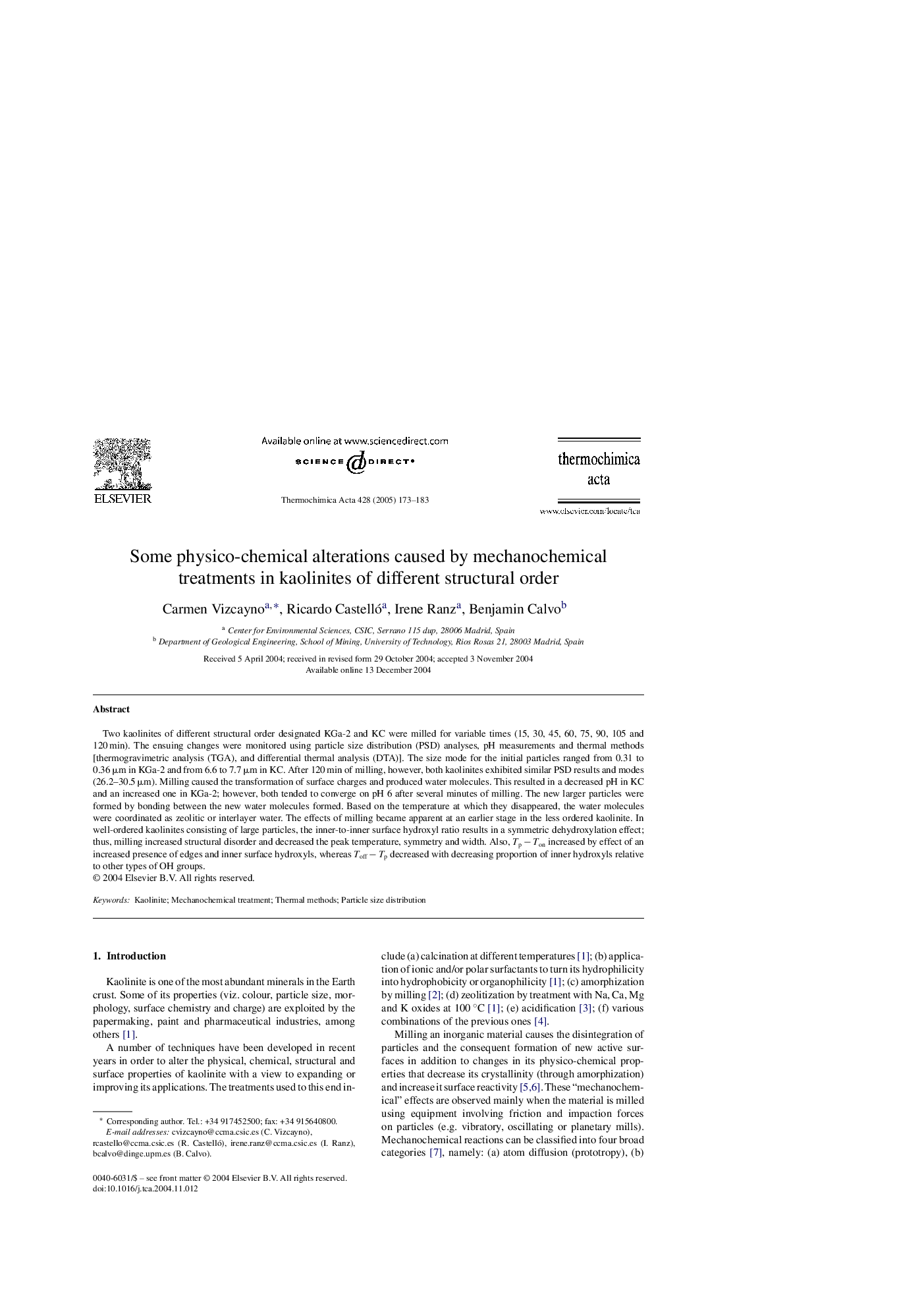| Article ID | Journal | Published Year | Pages | File Type |
|---|---|---|---|---|
| 9694184 | Thermochimica Acta | 2005 | 11 Pages |
Abstract
Two kaolinites of different structural order designated KGa-2 and KC were milled for variable times (15, 30, 45, 60, 75, 90, 105 and 120 min). The ensuing changes were monitored using particle size distribution (PSD) analyses, pH measurements and thermal methods [thermogravimetric analysis (TGA), and differential thermal analysis (DTA)]. The size mode for the initial particles ranged from 0.31 to 0.36 μm in KGa-2 and from 6.6 to 7.7 μm in KC. After 120 min of milling, however, both kaolinites exhibited similar PSD results and modes (26.2-30.5 μm). Milling caused the transformation of surface charges and produced water molecules. This resulted in a decreased pH in KC and an increased one in KGa-2; however, both tended to converge on pH 6 after several minutes of milling. The new larger particles were formed by bonding between the new water molecules formed. Based on the temperature at which they disappeared, the water molecules were coordinated as zeolitic or interlayer water. The effects of milling became apparent at an earlier stage in the less ordered kaolinite. In well-ordered kaolinites consisting of large particles, the inner-to-inner surface hydroxyl ratio results in a symmetric dehydroxylation effect; thus, milling increased structural disorder and decreased the peak temperature, symmetry and width. Also, Tp â Ton increased by effect of an increased presence of edges and inner surface hydroxyls, whereas Toff â Tp decreased with decreasing proportion of inner hydroxyls relative to other types of OH groups.
Related Topics
Physical Sciences and Engineering
Chemical Engineering
Fluid Flow and Transfer Processes
Authors
Carmen Vizcayno, Ricardo Castelló, Irene Ranz, Benjamin Calvo,
